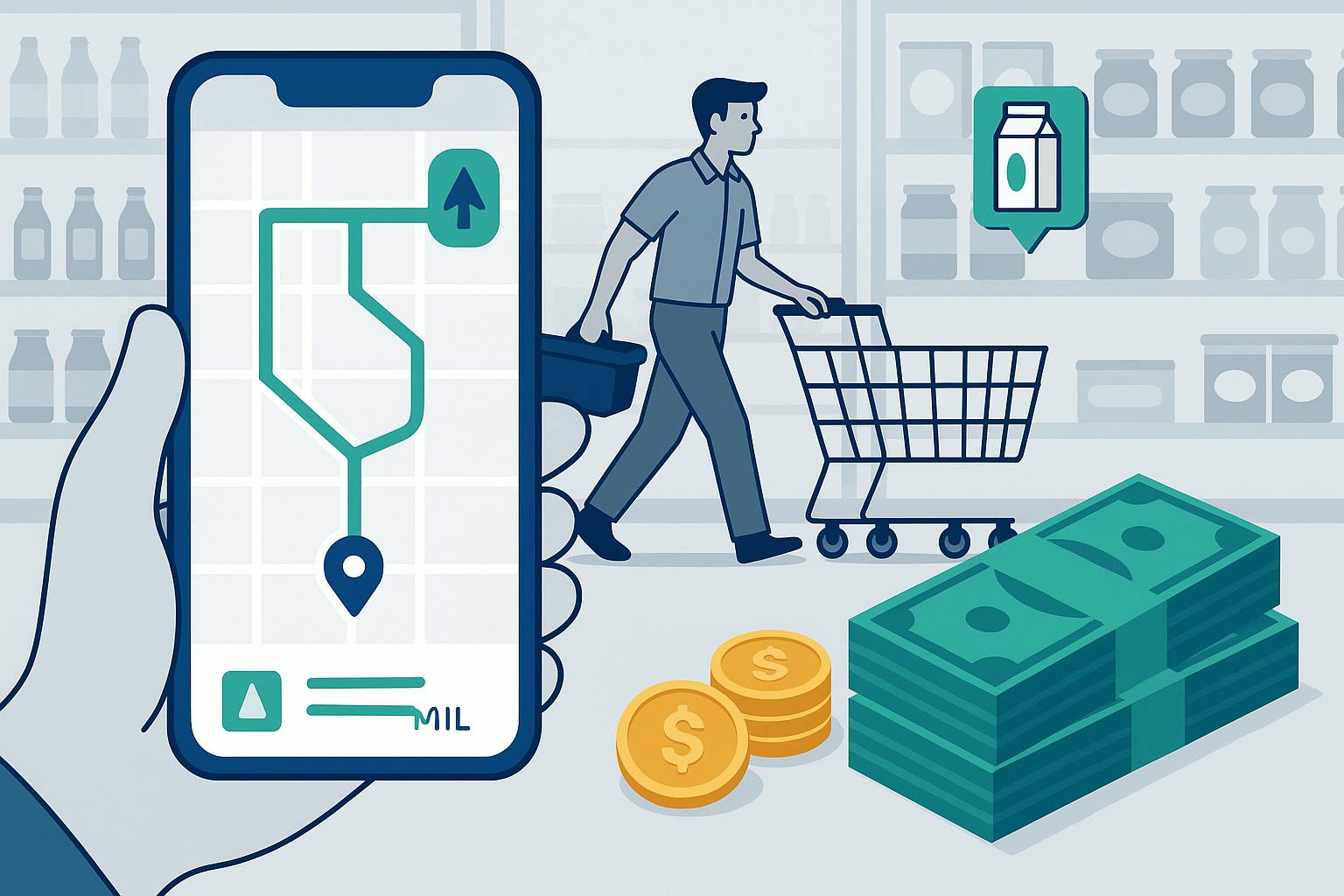Everyone loves the convenience of online grocery delivery. Tap a few buttons, and a cart full of bananas, oat milk, and cat food shows up on your doorstep. Magic, right?
But behind that magic is a brutal truth: online grocery fulfillment is eating retailers alive.
According to McKinsey, every $100 grocery order delivered to your home costs stores around $16 to fulfill — roughly $8 in picking labor and another $8 in last-mile delivery. And those are averages. Add rush delivery, out-of-stock replacements, or holiday chaos, and things only get worse.
Yet one cost consistently looms above the rest: picking.
And that’s where indoor navigation enters the scene.
The Hidden Cost of Wandering Aisles
Let’s break it down: the average grocery basket contains 30+ items. A human picker — whether an employee or a gig worker — has to crisscross the store, locate each SKU, avoid shoppers, double-check expiration dates, and consolidate the order.
According to McKinsey, this process typically takes 30 minutes per order, translating to $8 to $10 in labor. That might not sound catastrophic — until you consider margins in grocery are already razor-thin (around 1–3%). There’s no cushion here. Every misplaced pickle jar is a margin killer.
Now scale that up to 10,000 orders a day across a national chain. Suddenly, that $8 becomes an eight-figure problem.
The Real-Time Map of the Future Store
What if every picker — human or robot — had access to precise, real-time indoor positioning?
Imagine a handheld device (or app) that guides a store worker step-by-step through the most efficient route to pick an order, accounting for live inventory, traffic in the aisles, and changes in product placement.
You’re not guessing where the almond milk is. You’re being routed to it — like a personal Google Maps for the store.
This is the promise of indoor navigation. And it’s not science fiction.
From GPS Dead Zones to RTLS Superpowers
GPS doesn’t work well indoors. But modern indoor navigation uses a cocktail of technologies to overcome that:
- Bluetooth beacons and Wi-Fi triangulation for positioning
- Inertial sensors in smartphones to track movement
- Ultrawideband (UWB) for centimeter-level accuracy
- M-GPS® mapping of indoor spaces (yes, your store has a unique magnetic fingerprint)
- AI-powered path optimization for dynamic routing
Retailers can deploy Real-Time Location Systems (RTLS) with a combination of these tools, often using existing Wi-Fi infrastructure. The goal is simple: eliminate guesswork, reduce picking time, and kill inefficiencies at scale.
Companies like Apple (with WiFiSLAM) and Amazon (through its warehouse R&D) are already in the game. Now it’s time for the rest of retail to catch up.
Case Study: Instacart’s Route Optimization Trials
Instacart has quietly been piloting indoor navigation for pickers. By integrating real-time maps of store layouts with order routing, early tests show picking speed increases of up to 25%, with significant reductions in mispicks.
While some chains use voice-based systems or static shelf maps, dynamic indoor nav is more adaptive — it knows if a freezer section is blocked or if a product was recently moved during a reset.
Walmart, Ocado, and Carrefour have all explored forms of indoor mapping to boost fulfillment — not just for staff, but potentially even for customer-facing apps.
Bonus Benefits: More Than Just Efficiency
Indoor navigation doesn’t just improve picker performance. It also unlocks:
- Live tracking of assets like carts, scanners, and inventory bins
- Real-time updates on shelf stocking and out-of-stock items
- Better training for seasonal workers and new hires
- Fewer returns, because pickers grab the right SKU the first time
And in the long term, it enables a more robotic future — laying the groundwork for semi-autonomous bots that can pick or restock shelves with spatial awareness.
Solving the Last 100 Feet
Everyone obsesses over “last-mile delivery.” But for grocery fulfillment, the bigger challenge might be the last 100 feet inside the store.
That’s where money bleeds.
And with labor costs rising, delivery expectations tightening, and consumers wanting faster fulfillment than ever, optimizing the in-store journey is not optional — it’s existential.
Indoor navigation is one of the few technologies that directly tackles this pain point. It’s not flashy. It’s not trendy. But it’s a quiet revolution — one that could help online grocery shift from a loss leader to a sustainable business.
The Take-Away: Navigate to Survive
We’ve mapped the world. We’ve mapped our skies. But we still haven’t mapped aisle 14 — and that’s a problem.
The solution? Think like a cart, not a car.
Indoor navigation isn’t about replacing humans. It’s about making them faster, smarter, and less prone to error — because in online grocery, speed is currency, and mistakes cost more than money.


